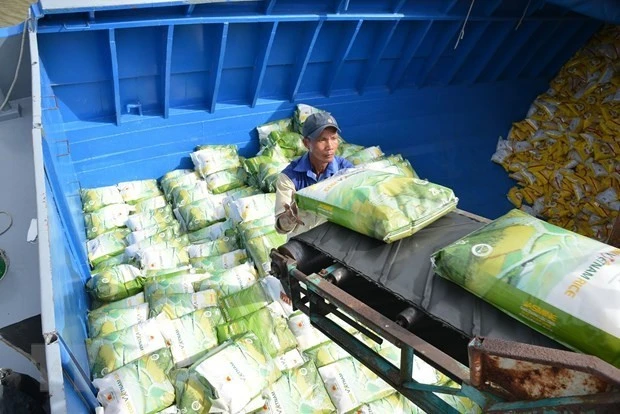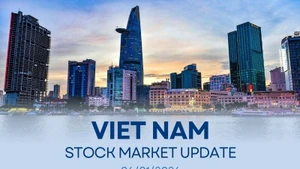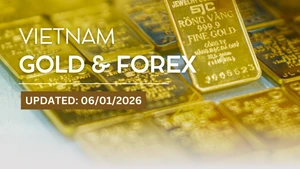Promoting green capital flows is crucial for realising Vietnam's national green growth strategy. According to the World Bank's estimates, Vietnam requires around 370 billion USD in investment capital to meet the demands of green growth, with the private sector playing a vital role in this contribution.
Open opportunities
A comprehensive overview of green finance mobilisation in the current context was presented at the forum themed “Realising the National Green Growth Strategy in Vietnam: Promoting Green Capital Flows”, which has been recently organised by Kinh te va du bao (Economy and Forecast) Magazine (under the Ministry of Planning and Investment).
Experts have stressed that opportunities for green finance in Vietnam are broadening as the legal framework for green credit, stocks, bonds, and investment funds has been gradually refined. According to information from the Institute of Training and Research at the Bank for Investment and Development of Vietnam (BIDV), by the end of June 2024, green credit outstanding debt had reached nearly 680 trillion VND, accounting for about 4.5% of the total outstanding debt in the economy.
From 2019 to June 2020, approximately 1.16 billion USD in green bonds were issued, with major issuers including EVN Finance, BIDV, and others. Since 2016, Vietnam has been progressively implementing the initiative of the Sustainable Stock Exchange and in 2017, it launched the Sustainable Development Index of the Vietnamese stock market, featuring the 20 listed companies with the highest sustainability scores on the Ho Chi Minh Stock Exchange (HoSE).
"The Stock Market Development Strategy to 2030 has set the goal of developing green financial instruments and sustainable finance, which are key pillars in building a green and sustainable capital market. This will contribute to mobilising medium- and long-term capital for renewable energy, clean technology, and other environmental protection projects," said To Tran Hoa, Deputy Director of Market Development under the State Securities Commission.
Quan Duc Hoang, a member of the Board of Directors at Amber Fund Management and Chairman of the A+ Investment Fund, stated that Vietnam's green finance market holds significant potential for development. However, each investment fund has its own set of criteria. Businesses must clearly understand the green criteria specific to their industry, establish a clear development roadmap, assess their needs, and thoroughly study each fund's criteria to collaborate successfully.
Identifying priority policies
Diep Thi Kim Hoan, Director of the Sustainable Development Department at the Deep C Industrial Complex, a pioneering company transitioning to an eco-industrial park model, stated that there are certain advantages to developing green finance. In particular, 19 Deep C Industrial Park businesses have introduced 137 resource-efficient and cleaner production solutions, including several industrial symbiosis initiatives. These efforts have successfully attracted major global brands in the automotive, electronics, and logistics sectors.
However, the lack of information regarding green credit providers, actual financial costs such as interest rates, guarantee fees, and processing fees, as well as the absence of specific criteria for green projects, pose significant challenges for businesses in developing circular and green economic models.
According to economic experts, Vietnam's green finance legal framework is incomplete and inconsistent. There have been no national regulations on criteria or lists of green projects across industries and sectors, which serve as a basis for credit institutions to determine green lending. In principle, customers eligible for green credit are supposed to receive favourable credit policies, especially in terms of interest rates. However, in practice, there have been no clear regulations on interest rate support or loan terms for these projects. Additionally, information dissemination and understanding of green stocks and bonds remain limited.
To promote green capital flows and drive sustainable growth, Le Hoang Lan from the Monetary Finance Department under the Ministry of Planning and Investment recommended developing guidelines for businesses on prioritised green project categories and incentives, following a roadmap from now until 2050. The government should encourage legal and institutional reforms and create favourable sectors for incentives to mobilise resources from the private sector and credit institutions to support green growth.
Le Hoang Lan also suggested that for green credit, it is crucial to issue early regulations, definitions, and standards regarding green project categories and sectors to ensure uniform application nationwide. As for green bonds, transparency in the disclosure of information by green bond-issuing enterprises should be strengthened. Policies should also be developed to allow investors to track the use of their funds in green projects through transparent and objective evaluations of reports on the use of green bond funds conducted by specialised organisations.
Solutions for developing green finance to support Vietnam's green growth goals have been proposed, including integrating green development and green finance strategies with the broader socio-economic development plans and strategies; soon issuing a green classification list; developing mechanisms, criteria and methods for emissions measurement across different sectors, industries, and entities, thereby guiding regulatory policies; issuing policy frameworks for behavioural and investment changes, investment in green infrastructure, while fostering innovation; attracting private sector involvement in green investments; providing financial support for green products and services; building a green finance ecosystem; training and developing workforce equipped to participate in the green transition; building comprehensive databases and information systems to support forecasting, and environmental risk and climate change management.
Dr Can Van Luc, Chief Economist at BIDV.
















